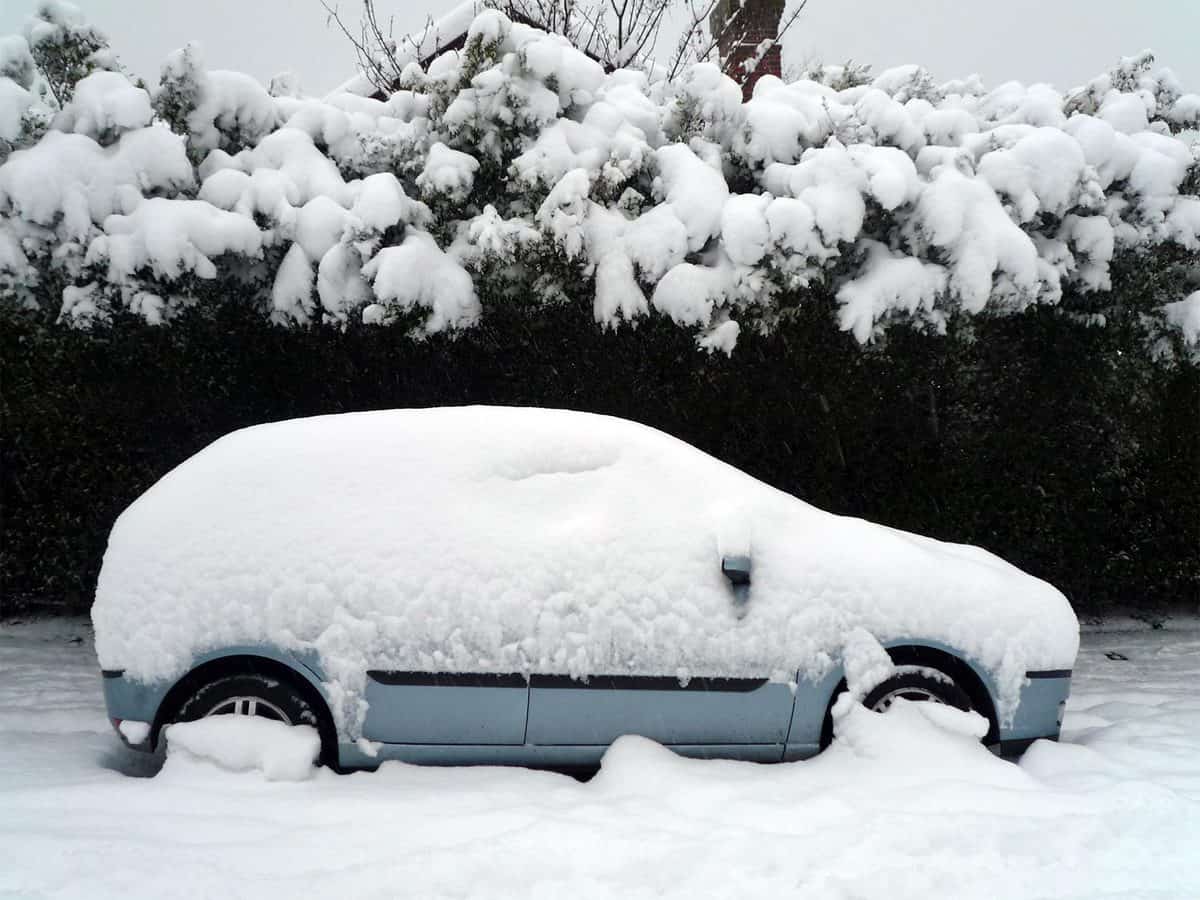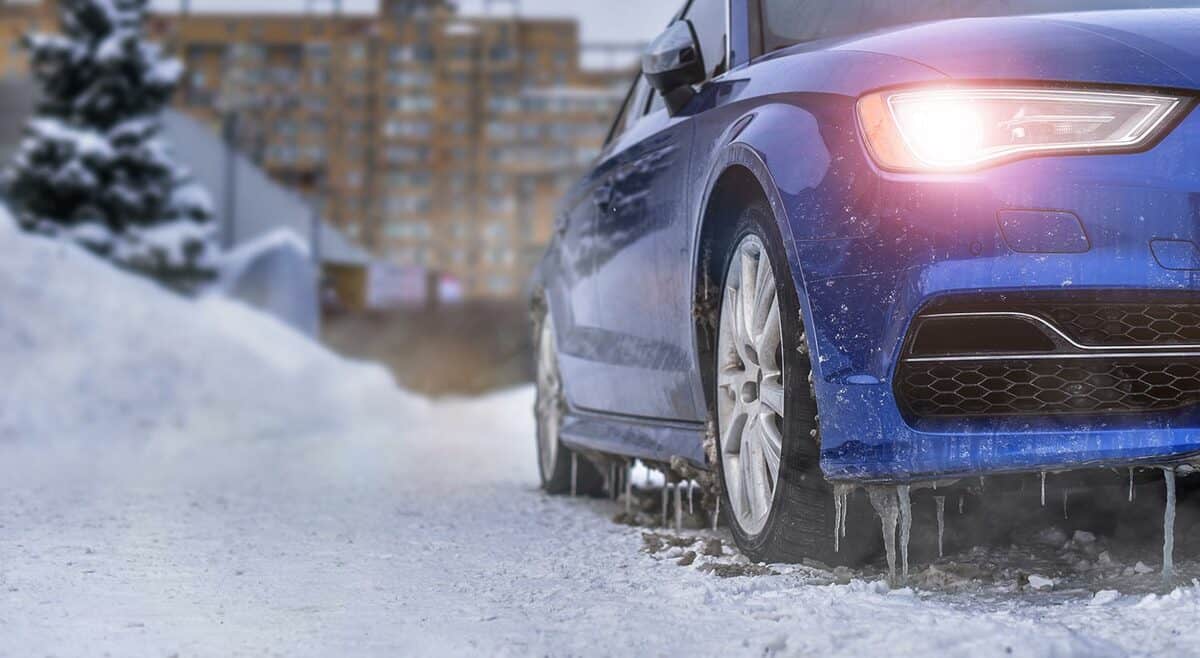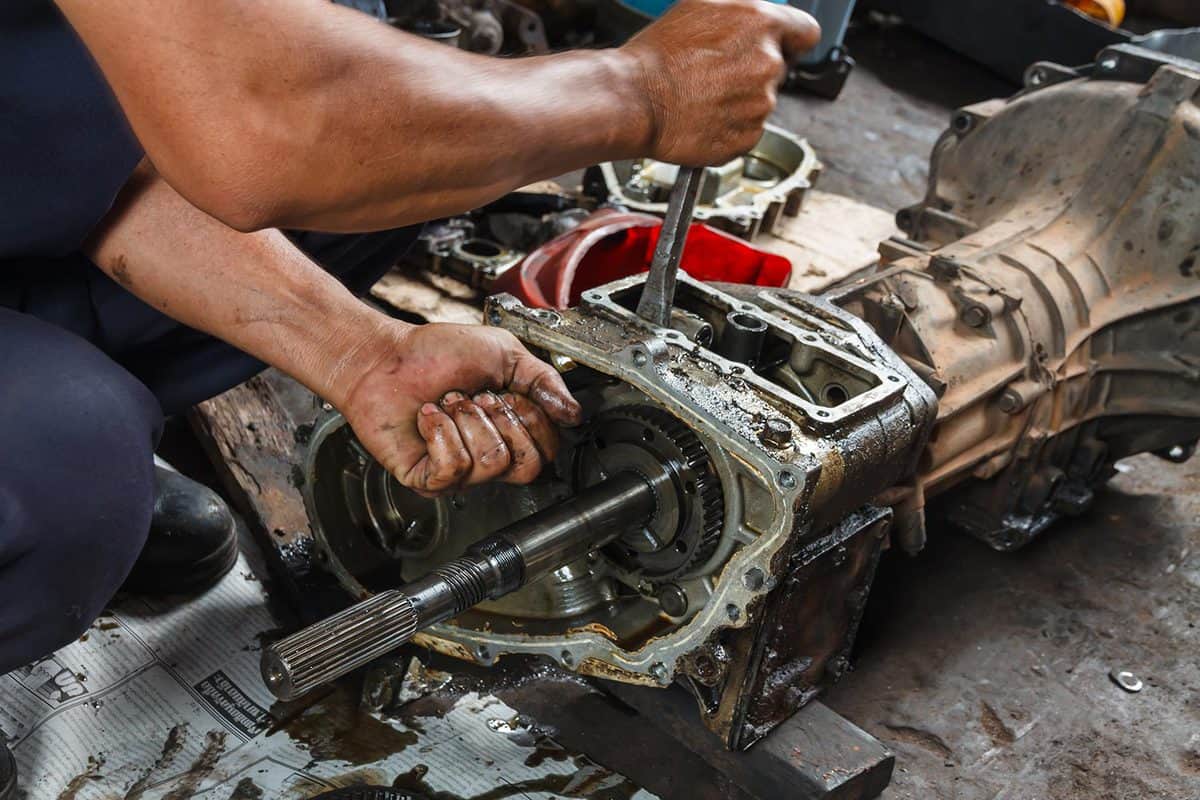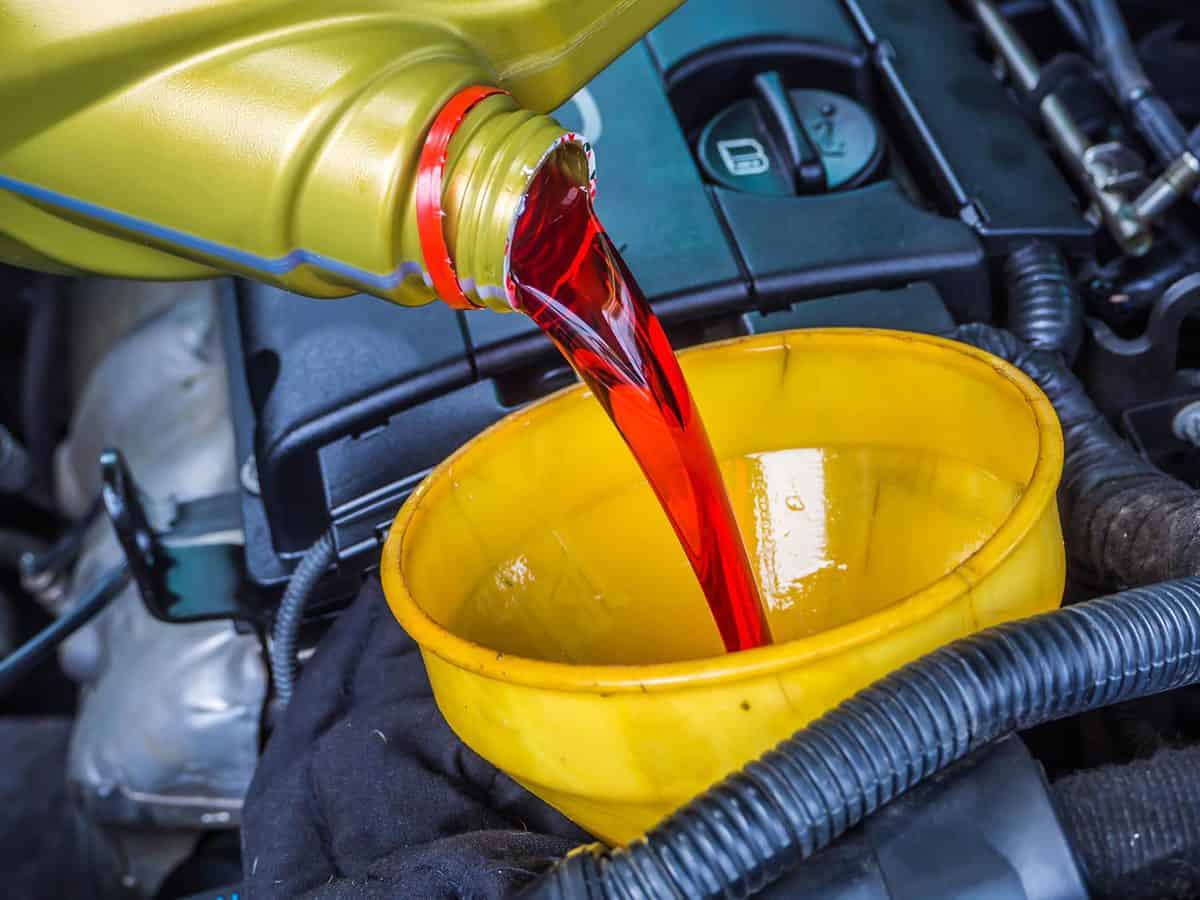Transmission fluid plays a vital role in the proper functioning of a car. But is it possible for transmission fluid to freeze? And if so, what do you do about it? After doing some research, let's take a look below to learn more.
Transmission fluid can freeze if water has made its way into it. If it does freeze, you'll need to give your vehicle time to warm up before going for a drive. Also, take your vehicle to a mechanic to check for damage.
To avoid the risk of your transmission fluid freezing, use the following tips:
- Warm-up your car before driving it.
- Purchase a block heater.
- Opt for synthetic transmission fluid.
- Park your vehicle inside.
- Check your seals.
- Start your drive slow.
Cold weather isn't kind to your vehicle's transmission. That's why in this article, we will discuss how to keep your transmission fluid from freezing in winter. We will also answer other frequently asked questions about transmission problems, so let's get to it!
![Auto car transmission parts being worked on in an auto mechanic shop, Can Transmission Fluid Freeze? [And What To Do About It]](https://vehq.com/wp-content/uploads/2022/05/Can-Transmission-Fluid-Freeze..png)
Does Transmission Fluid Freeze?
A vehicle transmission comprises many parts that work together to provide power to the wheels. The transmission directs power to the appropriate gear setting when you shift gears.
Transmission fluid lubricates the gears, which keeps them from overheating and helps the transmission last longer.
Transmission fluid is similar to engine oil in the sense that it lubricates moving parts. Another similarity is that cold weather can affect its viscosity (thickness).
When the temperature outside is cold, transmission fluid thickens and doesn't flow as easily. This can cause shifting problems because the fluid isn't reaching all the parts of the transmission. In extreme cold, the fluid can freeze.
Typically, the only time transmission fluid will freeze is if water has made its way into it. Water can enter the fluid through a seal or gasket that's not working properly or condense inside the transmission.
If this happens, give your vehicle plenty of time to warm up before driving it. This will give the fluid a chance to thaw and flow freely again. Next, take your vehicle to a mechanic and have the transmission checked.
The mechanic will drain the old transmission fluid and replace it with new fluid in most cases. They may also recommend putting in a lighter weight transmission fluid for better performance in cold weather.
However, if there is damage to the transmission, it may need repairs or replacement.
In order to avoid the risk of your transmission fluid freezing, follow these tips:

Warm Up Your Car Before Driving It
Warming up your car is good for the engine, but it's also good for the transmission. So, give your car a few minutes to warm up before shifting gears, especially if it's been sitting in cold weather.
Warming up the transmission will help the fluid reach its optimal temperature and flow more easily. So, if you have a remote start, take advantage of it!
Purchase a Block Heater
A block heater is an electrical device that goes around the engine block and warms it up. By plugging the block heater into an outlet, you can heat up your engine before starting your car.
A block heater is essential for vehicle owners who live in cold climates. It's an easy way to avoid transmission problems and keep your car running smoothly all winter long.
Opt for Synthetic Transmission Fluid
While it's more expensive than conventional transmission fluid, synthetic transmission fluid is less likely to freeze in cold weather.
If you live in an area with extremely cold weather, it might be worth making the switch to synthetic fluid. Of course, you can always switch back to the conventional fluid when the weather is warmer.
Synthetic transmission fluid is similar to synthetic oil in that it's designed to withstand extreme temperatures. Therefore, it's a good option for people who live in cold climates and want to avoid transmission problems.
Park Your Vehicle Inside
If you have a garage, park your car inside it. If you don't have a garage, try to find a sheltered spot from the wind and snow.
Check Your Seals
Before winter hits, look at the seals and gaskets around your transmission. If they're cracked or damaged, they might allow water into the system.
Replacing the seals and gaskets is an easy way to prevent transmission problems before they start. It's also a good idea to check them regularly throughout the winter.
You can also take your car to a mechanic and have them check the seals for you. They can also help you find any other potential problems with your transmission.
Start Your Drive Slow
When you first start driving, take it easy on the gas pedal. Don't try to accelerate too quickly and be gentle with the gear shifts.
By taking it slow at the beginning of your drive, you can help the transmission fluid warm-up and flow more easily. Once the fluid has warmed up, you can start driving normally.
By following these tips, you can help prevent your transmission fluid from freezing. More than that, your transmission will thank you for taking care of it during the winter!

Why Does Cold Weather Affect Transmission Fluid?
Transmission fluid is designed to flow freely, even in cold weather. However, if the temperature gets low enough, the fluid will thicken.
When this happens, the transmission fluid can't lubricate the transmission's moving parts properly. This can lead to problems, such as gears slipping or the transmission not shifting properly.
Your vehicle may also suffer delayed overdrive engagement. This means that the transmission won't shift into overdrive until the vehicle has been driven for a while.
If you notice any of these problems, it's important to take your car to a mechanic right away. They can help diagnose the problem and recommend the best course of action.
How Much Is A New Transmission?
The scary thing about transmission problems is that they can be expensive to fix. Depending on the severity of the problem, you might need to replace the entire transmission.
A new transmission can cost anywhere from $1,800-$4,000. The exact price will depend on the make and model of your vehicle.
You might be able to get a used transmission for a cheaper price, but it's important to make sure that it's in good condition. A used transmission could have the same problems as your old one.
If you're facing expensive repairs, you might want to shop around for a new vehicle. With so many options on the market, you're sure to find one that fits your budget.
Can You Rebuild A Transmission?
Another option for fixing a transmission is to have it rebuilt. This option is usually less expensive than buying a new transmission, but it can still be pricey.
The average cost of rebuilding a transmission is $2,500, which is why it's important to compare prices before you decide on a shop.
You should also make sure that the shop you choose has a good reputation. Ask around for recommendations, or look for reviews online.
A transmission rebuild is a big job, so you want to be sure that you're working with a qualified mechanic.
The exact price will depend on the severity of the damage and the make and model of your vehicle.

How Often Should You Change Your Transmission Fluid?
Ideally, get the transmission fluid changed every 30,000-60,000 miles if your car has manual transmission. For automatic transmission, get it changed every 60,000-100,000 miles.
Also, don't forget you can review your owner's manual for specific recommendations about changing your transmission fluid.
It's also a good idea to have your mechanic check the fluid level when you take your car in for regular maintenance. This way, they can catch any potential problems early on.
What Happens If You Don't Change Your Transmission Fluid?
If you don't get your transmission fluid changed, it can cause a lot of damage to your transmission. This is because the fluid can break down and stop lubricating the moving parts.
The result will likely be the transmission overheating and eventually failing. As mentioned earlier, this can be a very expensive repair.
The damage might be so severe that you need to replace the entire transmission. So, it's important to stay on top of maintenance and change your fluid according to your owner's manual recommendations.

Final Thoughts
By taking care of your transmission in the winter, you can avoid a lot of expensive repairs down the road. Be sure to change your fluid according to the manufacturer's recommendations, and watch for any signs of trouble.
If you do end up needing transmission work, be sure to shop around for the best price. You might also consider rebuilding the transmission instead of replacing it.
Made it to the end? Here are other articles that may be helpful:
Transmission Hot Idle Engine: What Does It Mean?
Can Transmission Fluid Get Low Without A Leak? [6 Points To Check]
